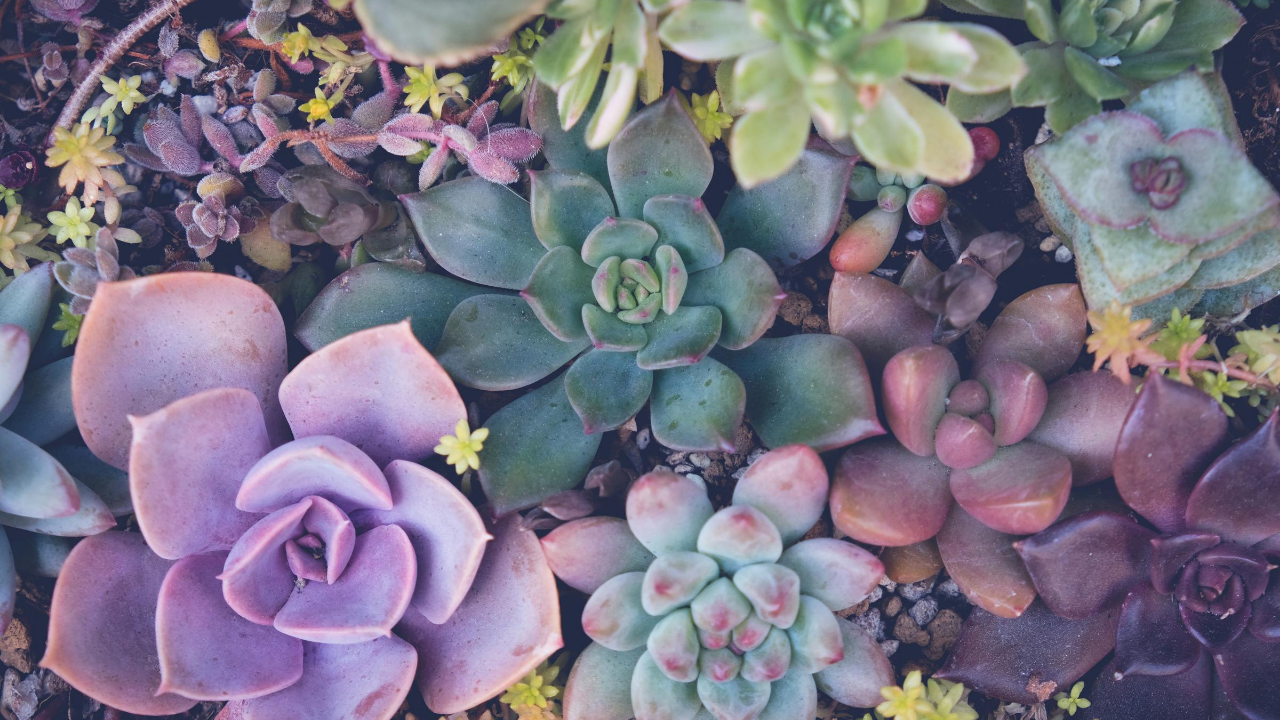
Considering the diversity of their appearance, succulents are perfect plants for stunning plant arrangements. They come in various sizes, colors, textures, and shapes, and there are so many amazing succulents to choose from. But which succulents can be planted together? Read on to learn how to combine different succulents and make beautiful succulent arrangements.
How to Combine Succulents

Almost any type of succulents can be paired together, but still, you should consider several things when making succulent arrangements.
Care requirements and growth period are the most important things when planting succulents together. If all succulents in an arrangement have the same care requirements and grow during the same season they will work together very well.
Other considerations, such as color, shape, and texture, are crucial in creating visually stunning succulent arrangements. These requirements are equally important and they dictate which types of succulents will be paired together.
Care Requirements
Succulents are generally easy-care plants. They all share the ability to store water in their parts (leaves, stems, or roots) and most of them are extremely drought-tolerant.
However, some succulents need more water than others. Some prefer full sun, while others benefit in part-shade. Some succulents are summer-dormant, some are winter-dormant. Hardy succulents withstand freezing temperatures and frost, while tender ones are less tolerant of the harsh conditions.
When planting succulents together, you should consider:
- water requirements
- light requirements
- temperature
- growth season (or dormancy period)
For example, the succulents with thinner leaves usually need more water than thick-leaved succulents. If you plant them together and supply them with the same amount of water, you’re risking losing one of those succulents. If you still plant them together, try to give water-loving succulents a ‘direct dose’ of water, while trying to leave other succulents somehow dry.
An important thing in creating succulent arrangements is planting the types that are dormant during the same period.

Graptopetalum, Aeonium, Aloe, Crassula, Gasteria, Graptoveria, Pachyphytum,and Haworthia are some of the summer-dormant succulents.

Echeveria, Sempervivum, Agave, Adenium, Euphorbia,and Lithops are winter-dormant succulents. Different succulents go dormant at different times of the year, and for best results, plant the succulents that belong to the same category together.
Color
One of the best features of succulents is their color. They come in almost any color, except deep blue. In addition to that, many of them have the ability to change their color as a response to the environment (hot temperature, sunlight exposure, etc.). This characteristic makes them even more stunning!
Although each succulent is beautiful itself, planting them together with color in mind, you can easily create gorgeous arrangements. The best recipe for creating a successful succulent arrangement is using basic color principles.
You can use succulents of complementary colors (the opposite colors on the color wheel, such as green and red, blue and orange, and purple and yellow). Reds and greens are found naturally in many succulents, so this kind of arrangement is quite simple to create.

If you use a monochromatic color scheme, you will need succulents of the same color, but different shades and tones. For example,green succulents come in various shades, so you can make more textured arrangements using different types of succulents. A great option is a monochromatic arrangement accented with a single different color.
Analogous color scheme (three colors next to each other on the color wheel) is often used in succulent arrangements. For example, yellow, yellow-green, and green is an analogous color scheme that gives you various options for picking succulents.
An interesting way to combine succulents is by the warmth of their color. Pair blue-green succulents with purple ones to get a cold-toned arrangement, or pair yellow, orange, red, and yellow-green for a warm-toned arrangement.
Variegated types of succulents or succulents with some kind of markings give an extra interest and are highly welcomed in succulent arrangements.
Shape and Texture
An interesting variation in succulent arrangements is achieved by using a variety of plants with different heights, shapes, textures, and special features (like hairs). You can choose among tall, upward-growing plants such as Sansevieria or Aeonium, rosette-forming like Sempervivum or Echeveria, cascading (trailing) like certain types of Sedum and Senecio…the options are truly endless.
You can play with succulents with various heights to achieve a more interesting design. Or you can create a uniform design using the succulents with the same height, but playing with colors and textures instead.
Some succulents offer great texture. For example, Gasteria, Aloe, and Haworthiagive an amazing texture with their white markings. Any type of Cacti adds a wonderful texture with its spines and characteristic stems. Euphorbia genus offers a wide range of growth forms and textures.
Although succulents are popular for their chubby leaves and interesting stems, some of them produce equally stunning flowers. If you include a flowering succulent into the arrangement, you can count on a beautiful display during its blooming time.
Pots and Containers – An Important Part in Succulent Arrangements
And last, but not least – pots and containers! Choosing the right container and playing with its size, shape, color, and texture can be as fun as arranging succulents.
When choosing the pot for a succulent arrangement, look for a pot with the colors, texture, and shape that either mimic the succulents in the arrangement or provide an interesting contrast. Choosing a container wisely can make a lot of difference, so as various types of top dressings such as pebbles or crushed stones.
CTTO: Succulents and Sunshine
As you can see, the diversity of succulents gives an infinite number of combinations. Be creative and don’t be afraid to experiment!
Are you interested in growing your very own Cacti and Succulents? We got our very own Cactus and Succulent grow kit for you that is available via our website or via Amazon.





